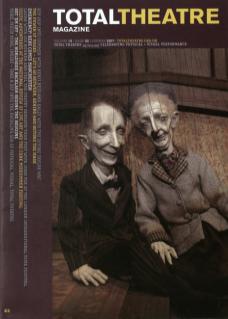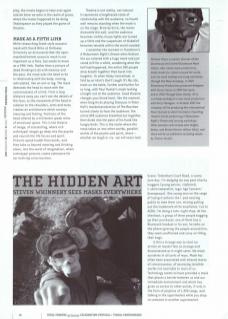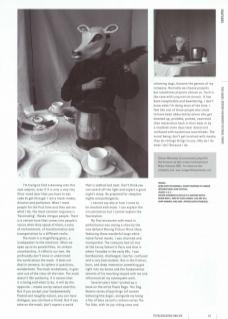Scene: Tottenham Court Road, a sunny June day. I'm dodging my way past charity muggers (young person, clipboard, t-shirt/sweatshirt, logo: Age Concern / Greenpeace). One young man on the verge of losing it exhorts the I-pod wearing public to take them out, miming pulling out the trademark white earphones. Cut to ASDA. I'm doing a late-night shop. At the checkout, a group of three people bagging up their purchases: one of them has a Bluetooth headset in his ear; he talks on the phone ignoring the people around him, they seem unaffected and carry on filling their bags.
Is this a strange way to start an article on masks? Not as strange and disconnected as it might seem. We mask ourselves in all sorts of ways. Mask has often been associated with altered states of consciousness, of accessing invisible worlds not available to most of us. Technology seems to have provided a mask that places a barrier between us and our immediate environment and which has given us access to other worlds, if only in the form of playlists of 1000 songs, and talking in the supermarket while you shop to someone in another supermarket.
I'm trying to find a doorway into this vast subject, even if it is only a very tiny Alice-sized door that you have to eat cake to get through. I am a mask-maker, director and performer. When I meet people for the first time and they ask me what I do, the most common response is 'fascinating'. Masks intrigue people. There is a certain tone that comes into people's voices when they speak of them; a tone of enchantment, of transformation and transportation to a different realm.
The mask is a magnifying glass, a loudspeaker to the emotions. When we open up to its possibilities, its certain uncertainties, it reflects our own. We profoundly don't know or understand the world about the mask. It does not deal in answers; its sphere is questions, wonderment. The mask misbehaves, it gets sent out of the class all the time. The mask doesn't like authority; if it senses that it is being told what to do, it will do the opposite – masks are by nature anarchic. But if you accept your fundamentally flawed and naughty nature, you can have dialogue, you can have a friend. But if you take on the mask, don't expect a world that is settled and neat. Don't think you can switch off the light and expect a good night's sleep. Be prepared for sleepless nights and poltergeists.
I cannot say why or how I came to be involved with mask. I can explain the circumstances but I cannot explain the fascination.
My first encounter with mask in performance was seeing a show by the now defunct Moving Picture Mime Show, featuring those wonderful large white naïve/larval masks. I was charmed and transported. The company had all met at the Lecoq School in Paris and that is where I headed in the early 80s. I was bamboozled, challenged, tearful, confused and a very bad student. But in the friction, burn, and deep immersion something got right into my bones and the fundamental tenants of his teaching stayed with me and influenced all my subsequent work.
Several years later I picked up a book on the artist Paula Rego. Her Dog Women series of paintings (of women behaving like dogs), alongside my being a fan of Gary Larson's cartoon series The Far Side, with its joy-riding cows and scheming dogs, became the genesis of my company. Normally we choose projects but sometimes projects choose us. Such is the case with Lying with the Animals. It has been inexplicable and bewildering, I don't know what I'm doing most of the time. I feel like one of those people who claim to have been abducted by aliens who get beamed up, prodded, probed, examined then materialise back in their beds or by a roadside some days later dazed and confused with mysterious nose bleeds. The moral being: don't get involved with masks; they do strange things to you. Why do I do what I do? Because I do.


